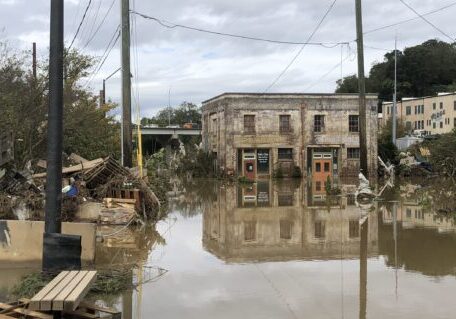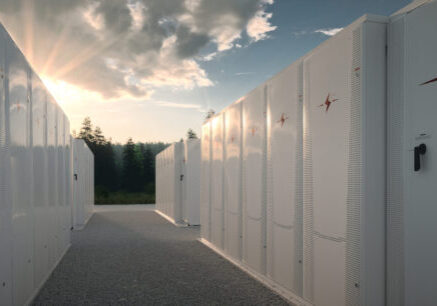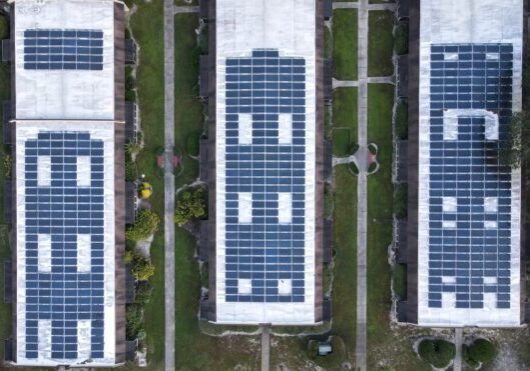November 1, 2013
Solar Storage: The New Resilient Clean Energy Technology
By Todd Olinsky-Paul
Clean Energy Group’s new Resilient Power Project is helping states figure out how to provide resilient power to critical infrastructure, so that needed services can be provided during a natural disaster that knocks out portions of the electric grid. These critical services include food, water, shelter, heating and cooling, medical and emergency services, communications, and fueling. Facilities that can provide these services include community buildings, schools, supermarkets, gas stations, cell towers, and hospitals, among others.
There are many technologies, and combinations of technologies, that can be used to provide resilient power to critical facilities. One method is to add solar PV to the facility, with a battery storage backup system. Because there is a lot of interest in solar and energy storage systems, and questions about how they operate and interact with the grid, we decided to provide the following primer. We also describe new business models and companies that are beginning to move into this solar storage space, taking advantage of new revenue streams that could change the game for how energy storage is financed.
Solar/Storage 101
Let’s say you have a large facility or campus with a sizeable PV system on site (local generation). The PV system generates electricity when the sun shines, which is mostly at midday and early afternoon, supplying the facility with electricity. During those times, if the PV system’s electricity generation exceeds local demand, the excess generation is sold onto the grid under a net metering contract. When local generation does not meet the facility’s demand, for example in the evening, the grid provides electricity to bridge the gap. This works well for the local facility; all of its power needs are met. However, for the electric grid operator, who must make electricity supply meet demand from moment to moment, the PV system’s electricity feeding into the grid can cause problems, because PV output is very variable over very short time periods. The grid operator cannot predict how much electricity is going to be coming from that PV system at any given moment. If a cloud happens to come between the sun and the PV modules, electricity generated from the PV system will fall quickly, and the grid operator must have spinning reserves ready to step in at any time to make up for the sudden loss of generation. If this were not the case, the local facility, and others on the grid, would experience constant fluctuations in power.
If this PV system were a grid-scale system, selling power to the grid under a power purchase agreement, the same variability problem would exist, but at a greater scale. At higher levels of penetration of wind and solar on the grid, this variable generation can cause significant problems on the grid.
Going back to the local facility with its PV system, one way we can mitigate problems caused by variable PV generation is to add battery storage to the system. Now, when local generation exceeds local demand, the excess electricity is first used to charge the battery. When the battery is fully charged, excess power is exported to the grid. If a momentary cloud comes overhead, the PV/battery storage system continues to export electricity at a steady state, because the system can pull power back out of the battery to compensate for the momentary drop in solar generation. This is a much more stable system from the grid operator’s perspective. Output from the solar/storage system now looks much more like output from a dispatchable gas, coal, nuclear or hydro plant, and the PV/storage system owner may now be able to sell power into markets that were not previously open to him because of the addition of the battery.
Resilient Power 101
In order to provide a resilient power benefit to our local facility, we add special switches that can isolate (or ‘island’) the PV/storage system in case of a grid failure. When the larger grid goes down due to a natural disaster, a switch is thrown that decouples the local circuit and allows it to continue to function as an isolated unit. In this scenario, the local facility would need to drop non-essential load, keeping only its critical loads powered, in order to extend the life of the battery. For example, in the example of a university, critical loads might include lighting and HVAC equipment in buildings designated as community emergency shelters. Other loads, such as non-critical buildings (libraries, computer labs, theaters, etc.) would not be powered. The PV system would continue to charge the battery and power critical loads when the sun was shining, and the battery would power critical loads when there was not enough solar power. In order for this system to work, the PV would need to be sized sufficiently both to power critical loads and charge the battery fully during the daily period of peak insolation; and the battery would need to be of sufficient size to carry critical loads overnight and into the next afternoon.
In order to make this system even more resilient, we could add a supplemental generator, such as a gas- or biomass-powered microturbine or engine running in CHP mode (where waste heat is captured and used for space heating). In effect, we now have a microgrid.
This simple system becomes more complicated, but also more cost-effective, when additional revenue streams from grid services are factored in. If the PV/storage system were located in an area that is compliant with FERC orders requiring fair compensation for grid services, the battery storage could earn significant revenue by selling ancillary services to the grid, such as frequency regulation services. In some areas, it could also engage in electricity arbitrage, buying cheap power at off-peak times and discharging it during peak demand times, when it is most valuable. Since grid-damaging natural disasters occur only infrequently, the battery would be able to generate these revenue streams during the vast majority of its lifespan. This greatly improves the cost/benefit calculation for the PV/storage system. Decisions about whether to provide services to the grid or the local facility would be made on an economic basis, depending on whether more money could be made by providing grid services, or saved by providing power to the host facility. If the grid were to go down, the PV/storage system would island just as before, providing valuable critical services to the community at large.
With more grid operators coming into compliance with the FERC orders mentioned above, new third-party battery companies are beginning to take advantage of the revenue streams made possible by these regulatory changes. Two companies operating in this space are Solar Grid Storage and Energy Surety Partners. These companies provide the battery and inverter free of charge, collocated with a PV or wind generator. Their business models are based on the provision of grid services, services that energy storage systems like batteries can provide very quickly and accurately. They also engage in electricity arbitrage. The renewable generator benefits because the presence of energy storage smoothes the combined system output and makes it more dispatchable; in a microgrid situation, the battery helps to integrate and balance local renewable generation with other generators and with loads. An example of this model in action is the new Konterra solar microgrid in Maryland.
Such new business models could make it much easier for customers to add storage to existing solar systems, or to build storage into new systems, through what are essentially leasing arrangements similar to the third-party models that have made PV broadly accessible and wildly popular. As more areas of the country come into compliance with the new FERC orders, the cost/benefit calculation for energy storage will continue to improve, and up-front costs will continue to decline, removing a major financing barrier to purchasing expensive equipment. This is how the solar industry has exploded in size; solar storage could well be the next technology to take off through creative technical and financial engineering.
In the very near future, Clean Energy Group will feature Energy Surety Partners and Solar Grid Storage in a webinar on solar/storage solutions. Stay tuned!














